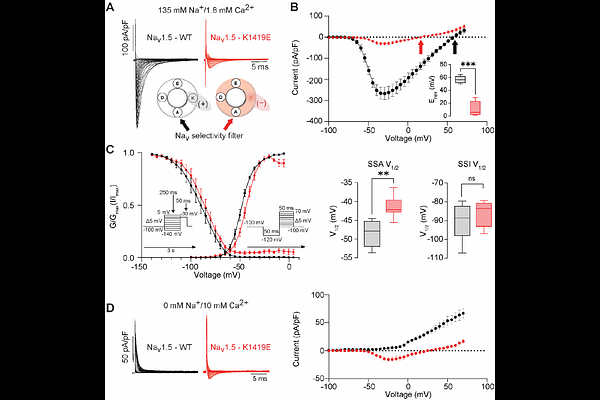Selectivity filter mutation in NaV1.5 promotes ventricular tachycardia

Selectivity filter mutation in NaV1.5 promotes ventricular tachycardia
Selimi, Z.; Tarasov, M.; Meng, X.; Dias, P.; Moise, B.; Veeraraghavan, R.; Radwanski, P.
AbstractLoss-of-Function (LoF) mutations in the SCN5A gene, which encodes for the predominant cardiac NaV isoform, NaV1.5 result in either deficiency in the channel expression or function. Impaired NaV1.5 expression and function underlie reduced peak Na+ current (INa) and result in ventricular conduction velocity slowing, predisposing the heart to conduction block and ventricular arrhythmias clinically associated with Brugada syndrome (BrS). Recently, a missense mutation in NaV1.5 selectivity filter (DEKA motif), K1419E (DEEA) has been identified in patients with BrS. Despite early characterization of mutations in selectivity filter of other NaV isoforms, little is known about the impact of DEEA on NaV1.5 function as well as on cardiac electrophysiology. Therefore, we generated a mouse heterozygous for NaV1.5 DEEA to characterize the mutation and investigate the outcome of this functionally deficient NaV1.5 variant on cardiac electrophysiology and arrhythmias. Heterologous expression system and isolated cardiomyocytes revealed lower current density and unchanged NaV1.5 expression in DEEA vs. wild type (DEKA). On the organ level, optical mapping revealed conduction velocity slowing in DEEA hearts, which was accentuated by flecainide resulting in vivo ventricular arrhythmias. Overall, to our knowledge, we provide the first mechanistic insight into the proarrhythmic consequences of a functionally deficient BrS mutation in NaV1.5.